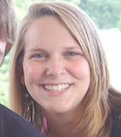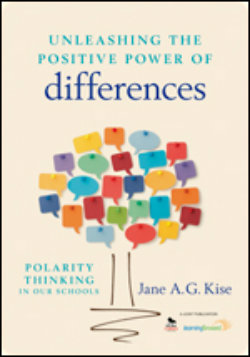Polarity Thinking in Our Schools
Unleashing the Positive Power of Differences: Polarity Thinking in Our Schools
By Jane A. G. Kise
(Corwin, 2014 – Learn more)

Unleashing the Positive Power of Differences: Polarity Thinking in Our Schools was not a winner for me. I found the book to be quite repetitive, and a large portion of it seemed to be designed as a how-to guide for a professional development presenter rather than a casual inquirer like myself. Admittedly, the description on the back cover appeals to “education leaders” (and the book is co-published by Learning Forward – the national association for professional developers), but I self-identify as a teacher leader – interested in improving, innovating, and sharing. To find that this definition is much narrower was an insult in itself.

In fact, unexpectedly, I found myself turning to this book as a resource for talking points on particular issues, from teacher evaluations to how to teach mathematics. This was a pleasant surprise but an unintended consequence of her writing and not what I was looking for when I selected this book.
What’s inside the book
It took me many tries to get past the introduction, because Kise launches into new information with diagrams and research pretty abruptly. Once I got through the initial explanation, though, in Part I, “Understanding Polarity Thinking,” I found little purpose in reading on.
Part II, “The Big Picture of Polarity Thinking in Education Reform,” attempts to solve big-picture issues within education reform, relentlessly listing the same pros and cons of opposing sides in paragraphs, numbered lists, and charts, while Part III, “Putting the Small Polarity Thinking Tools to Work,” is a scripted, illustrated guide to introducing these concepts to colleagues. By the time I got to Part IV, “A Closer Look at Why We Believe What We Believe,” I was too exhausted to wade through the many charts and figures in what I feel would have otherwise been a very engaging chapter.
Kise’s book would be useful for administrators or others who are shouldered with the task of uniting staff and coming to an agreement. However, I found myself thinking, “Is she really claiming to solve huge educational debates in 20 pages apiece? Doesn’t each of these require its own book or two?” Kise’s proposing basic, elementary solutions seemed precocious. Additionally, I feel that her key steps, like “mapping the polarity,” oversimplify the opinions, backed by research, of both new and seasoned educators and will not actually move people forward together.
I have opinions already
“How does this apply to me? I have my opinions already,” was my constant refrain throughout Part II. Obviously, I know that I am not correct 100% of the time and that there are upsides to others’ points of view, just as there are downsides to my own. Don’t we learn that in middle school ourselves? I felt patronized, almost pandered to, when the obvious point, “Work together, and use the best parts of everyone’s ideas to come up with a compromise,” (my words, not hers) was hammered in incessantly.
I will give Kise credit for making things crystal clear and including research and visuals along with her points. However, I feel that the length of the book was not warranted; much of the subject matter that she attempts to cover left me wanting more information, with the intended purpose overstated.
As I mentioned, the book moves rather slowly. Much of this is because it is broken into very small sections which, instead of being quick, readable chunks, are actually all fairly separate topics. The book is dense and simply has too wide a scope of individual issues. Perhaps reordering sections and marketing the instructional guides as supplements would improve the entire book.
Because it is much more manual than manuscript, I do not recommend Kise’s book for teachers. Administrators or even team leads, though, might appreciate some of the direction. The issues raised are important. Yet, overall, Kise uses too many words for clarification and not enough on deep diving.
Emily Barksdale is a 6th grade social studies teacher at Ann Richards Middle School in Dallas, TX. She advises the school student newspaper and is a 2012 Teach for America Dallas-Fort Worth corps member. Barksdale is a graduate of Furman University and a member of Omicron Delta Kappa and the National Council for the Social Studies.


































